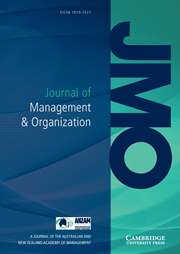Article contents
The impact of disaggregated formal institutional distance variables on entry mode decision: Evidence from Japan
Published online by Cambridge University Press: 31 August 2023
Abstract
Grounded in the organizational legitimacy perspective, this study examines the influence of formal institutional distance (FID) on the entry mode choice of Japanese cross-border acquirers. By disaggregating the FID variable using the Worldwide Governance Indicators, we provide a nuanced understanding of the relationship between FID dimensions and acquisition behavior. We find that out of the six disaggregated FID measures, three dimensions significantly impact acquisition decisions. Specifically, FID related to ‘regulatory quality’ and ‘control of corruption’ negatively affects the likelihood of full acquisitions, while FID related to the ‘rule of law’ positively influences full acquisitions. Our findings challenge the use of aggregated measures and highlight the importance of considering institutional variations. Japanese acquirers demonstrate a preference for higher control in uncertain legal environments. This study contributes to the literature by offering insights into the specific FID dimensions that drive the choice between partial and full acquisitions for Japanese firms.
Information
- Type
- Research Article
- Information
- Copyright
- © The Author(s), 2023. Published by Cambridge University Press in association with the Australian and New Zealand Academy of Management
References
- 1
- Cited by

